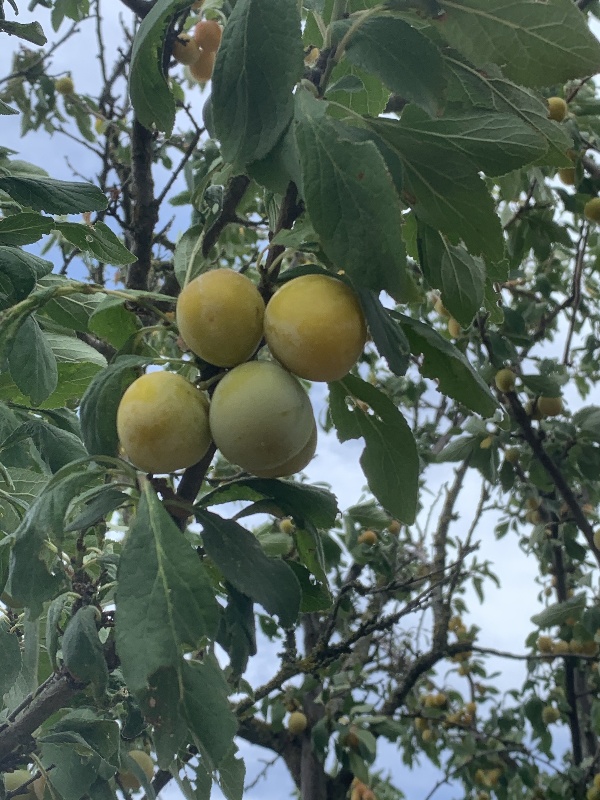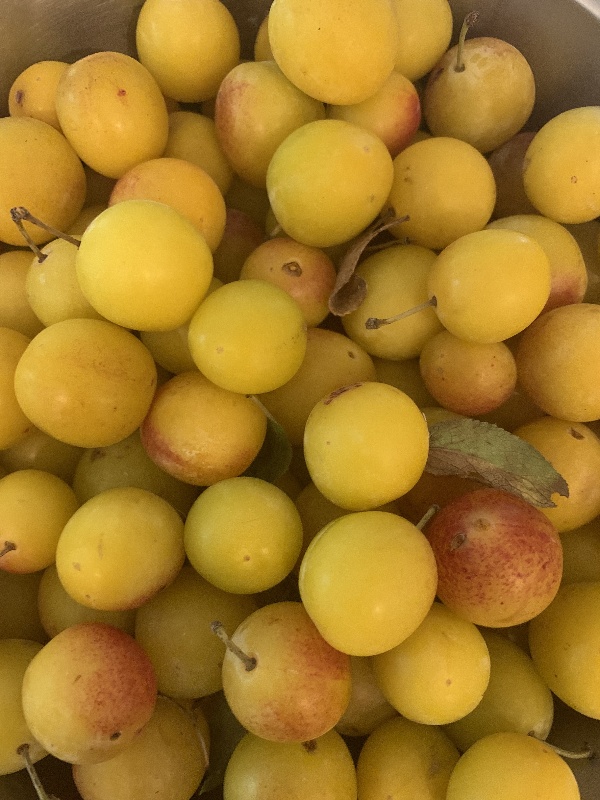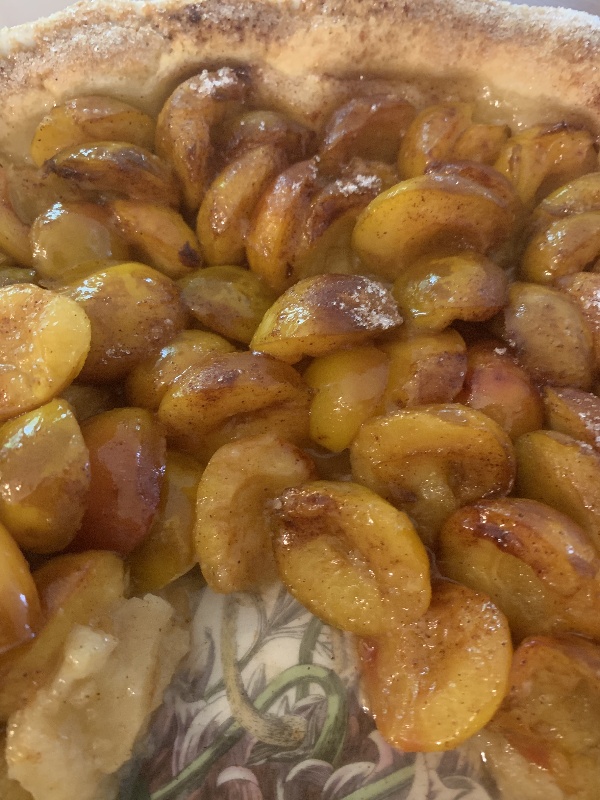It is already the season for mirabelles and we can not only see them in the trees all around us, but we are just starting to find them in the local farm shops and markets as well. The big question is where does this delicate, yellow little sort of plum come from?
This fruit which is most often associated with Lorraine (which apparently supplies nearly 70% of world production) has of course made its way into northern parts of Alsace since the 15th century.
Patrick tells me that the Alsatian mirabelle differs from that of Lorraine in its color of an orange yellow, slightly red when ripe, in the delicacy of its skin which protects it from the heat of summer and in its taste of honey and slightly vanilla.

We collected a good kilo today, when actually it should ripen in mid-August until early September. But everything is a bit early with the heatwaves we are experiencing on our planet and in our region in particular. The locals here say we will have to start planting orange trees if this continues!
Mirabelles can be eaten right from the tree, as we did at the end of our walk today, and we can also make pies, cakes, crumbles, jam (I will definitely do that ; -) ), sorbet, syrup and for those who like it: schnaps. This afternoon, teamwork in the kitchen: Patrick made the pastry whilst I pitted our kilo of picked fruit. The pie is now in the oven for 30-40 minutes and the house already wafts of delicate plum and cinnamon.

The other hotly debated point locally is whether the tarte aux mirabelles should be made with a ‘custard’ or just with fruit and cinnamon sugar .. Our village bakery Heitz makes it with a delicious custard, but we do without it .. There are those who top the pie with streussel see this delicious recipe from Jean-Marie Hincker, pastry chef from Cernay. Either way, we’re in for a treat and I invite you to join us for tea (I just read that it combines very well with vanilla green tea, while plums combine better with black vanilla tea).
A guäter! As they say here..








